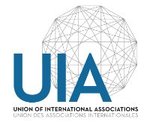Science and Education a New Dimension
Iss. 182. 2018.
Z. T. Adylova The macro-concept “chess” verbalization from the cycle “Shakhopoeziya” in the collection of verses “Leza zel” A. Moisienko
https://doi.org/10.31174/SEND-Ph2018-182VI53-01
Abstract. The article covers the concepts “chess” and “chess game” analysis based on the poetry from the cycle “Shakhopoezia” by Anatoliy Moisienko. In the contextual plan, three main concepts are considered hereby: chess pieces, moves and chessboard. The verbal explicators of the “chess” concept are conceptualized as well as features of poetic variations on chess themes and themes of the chess composition, also the associative names of the abovementioned mental form are outlined and the lexical associative connections of its main nominations representing the “chess” concept are analyzed.
Keywords: chess, chess game, concept, chess pieces, verbalization.
Z. T. Adylova The macro-concept “chess” verbalization from the cycle “Shakhopoeziya” in the collection of verses “Leza zel” A. Moisienko
L. Harutyunyan Economic event conceptualization through script theory
https://doi.org/10.31174/SEND-Ph2018-182VI53-02
Abstract. Modern media make an inextricable part of human life and provide an essential way of learning about worldwide events. All means target the mass audience by letting them have access to information, and securing its dissemination. The media can thus exert a powerful influence on people’s opinions by attracting their attention to certain events through the use of framing theory principles. Framing theory implies the presentation of the news to the audience in such a way that it impacts people’s choices in perceiving and processing information. Frames are data-structures that work to organize message meaning. To understand events and situations, people use various frames or scripts that are registered in their memory in an orderly manner. There is a limited study done in regard to the field of economic events conceptualization from the view of cognitive linguistics. Therefore, the present paper attempts to make a modest contribution in this domain with analysis and discussion of the script and its constituents inherent in an economic event published on the website www.theguardian.com in 2014. It mainly addresses issues related to reading and understanding of business news, focusing on the organization and interpretation of scripts relevant to economic events. It discusses various theories concerning the nature and principles of economic events comprehension and the peculiarities regarding the structure of frames and scripts that are employed by people for processing information related to economic events. In the paper the theory of scripts is interpreted as a main tool for news message presentation on behalf of the journalist. As is known, scripts as types of a concept contain structural elements – terminals or slots that must be filled by specific instances or data (agent, change, time, location, recipient, intention, cause, result, etc.) which are activated in accordance with the provided information. These slots can be represented either explicitly or implicitly, depending on a variety of factors. We distinguish between nuclear and alternative parts inherent in the structure of scripts. Due to the nuclear part (agent, change, time, location), we are able to recognize the situation in the process of its interpretation, whereas the alternative part (recipient, intention, cause, result, forecast, evaluation, etc.) conveys conventional information about the latter. However, in the process of economic event conceptualization, they come forward and become salient to ensure the reader’s comprehensive frame-building process.
Keywords: Economic Еvents, Business News, Framing Theory, Economic Еvent Conceptualization, Scripts for Economic Events Conceptualization.
L. Harutyunyan Economic event conceptualization through script theory
M. Kh. Humennyi, V. Yu. Humenna Canons of the genre of the anti-war novel (A. Barbus, E. Remarque, O. Gonchar)
https://doi.org/10.31174/SEND-Ph2018-182VI53-03
The article is dedicated to the study of the canons of the genre of anti-war novels by A. Barbjus, E. Remarque and O. Gonchar. The peculiarity of the artistic system of each of the artists in the reproduction of battle paintings is determined, the absence of climaxes and plot-compositional feature of novels are established.
Keywords: canons, structure, artistic system, poetics, principle of historicism, philosophical, existences, antiwar.
M. Kh. Humennyi, V. Yu. Humenna Canons of the genre of the anti-war novel (A. Barbus, E. Remarque, O. Gonchar)
O. A. Kasianova Articulatory and acoustic characteristics of phoneme /m/ (experimental and phonetic research) philology
https://doi.org/10.31174/SEND-Ph2018-182VI53-04
Abstract. Currently, in the Ukrainian phonetic literature there is not enough precise instrumental data on the properties and modifications of sounds. The main attention in the Ukrainian phonetic literature is focused on the acoustic properties of only vowels of the Ukrainian language. However, the system of consonant phonemes of the modern Ukrainian language is described in detail in the works of many domestic researchers, where the main attention is focused on the basic articulation characteristics of phonemes. In the phonetic literature there are practically no detailed descriptions of the labial consonants as a class and their acoustic features. Therefore, the text deals with the description of the variants of Ukrainian labial consonant phoneme /m/. Acoustic-articulatory features of allophones of /m/ are described. The experiment described in the article was conducted in the Educational Laboratory of Experimental Phonetics of the Institute of Philology of Taras Shevchenko National University of Kyiv. Six speakers of the Ukrainian literary language (teachers, students and postgraduate students of the Institute of Philology of Taras Shevchenko National University of Kyiv, who comprised a small social group according to professional, age and regional criteria) were selected for analysis. The analysis of the recorded speech was carried out using the Praat computer program. The article presents spectrographs and oscillograms obtained with the help of the Praat computer software. Analyzing spectrograms and oscillo- grams in the Praat program, we took into account the co-articulation unity, the statistical errors caused by the human factor, as well as the specificity of the transmission of sounds by an acoustic signal. The listed characteristics of phoneme /m/ in the article give an opportunity to make such conclusions. The creation of the labial-nasal is due to the complex system of work of all speech organs. Lip-tongue focus allows you to attribute this sound to the group of labials, and the harmonic combination with vowels in the composition and other vocal properties – to the sonorous. An important feature of the composition of the labial is the continuous development of periodic oscillations, which gradually increase in amplitude and reach the maximum in initial phase of disconnection. Such oscillographic features indicate the smooth tension of articulation movements, and, therefore, the affiliation /m/ to the closed-pass, rather than the breakthrough. The consonant features of the consonant being studied are clearly manifested in the spectrograph. We will learn about the loss of energy in the F2 band and the resonance activity on the F3 and F4 regions, which is an important condition for the creation of nasal sound, which is an important condition for articu- lation tension.
Keywords: labial consonant, bilabial, phoneme, allophone, /m/.
O. A. Kasianova Articulatory and acoustic characteristics of phoneme /m/ (experimental and phonetic research) philology
I. V. Khrin Metaphor in English
https://doi.org/10.31174/SEND-Ph2018-182VI53-05
Abstract. In the article, there are special features in the metaphor of the English language. It is brought about, that the metaphor of the functions of the movement is semantic-syntactic. Was made a conclusion, that process of metaphorization has two directions: between people with nature and nature to people, in the non-living to the living. Tied up, the metaphor can be interpreted in a mobile as a real semantic- syntactic one. Metaphoric expressions is represented by the mainstream views and intercourses of the English, who you especially want to feel allegorical, live with the vista, take it easy to see the singing style, look at it. The rule of metaphor is to rotate English students and students, it’s not just a translation from Ukraine to English.
Keywords: metaphor, English language, functions, metaphorical expressions, linguistics, semantic element.
I. V. Khrin Metaphor in English
N. V. Leonova Newly Formed Words in the Novels of Ukrainian Science-Fiction Writers of the Second Half of the Twentieth Century
https://doi.org/10.31174/SEND-Ph2018-182VI53-06
Abstract. The current article reports on the complex analysis of the neologisms specific character in the language of the Ukrainian science-fiction writers of the second half of the twentieth century. The semantic and the lexical groups of the neologisms are studied as one of the ways for the contemporary Ukrainian language to develop. Various ways of creating of authoring neologisms are also being researched.
Keywords: newly formed word, the language of the science-fiction writing of the XХ century, neologisation, occasionalism, usual word.
N. V. Leonova Newly Formed Words in the Novels of Ukrainian Science-Fiction Writers of the Second Half of the Twentieth Century
A. S. Hovhannisyan, L. Ts. Nikolyan On Semantics of Blessings and Curses in English and Armenian: Linguo-Cultural Perspective
https://doi.org/10.31174/SEND-Ph2018-182VI53-07
Abstract. The interest in linguo-cultural studies has always instigated much research. The article aims at exploring the curses and blessings in English and Armenian linguo-cultures. It focuses on idioms, broadly defined, and its relation to curses and blessings. Although much has been said about idioms, there are still significant gaps in our treatment of these linguistic units. Special focus is laid on semantic patterning of curses and blessings in two different languages for revealing their common and distinctive features.
Keywords: Curse, blessing, phraseological unit, sentence-lawn idioms, semantics, Holy Bible.
A. S. Hovhannisyan, L. Ts. Nikolyan On Semantics of Blessings & Curses in English and Armenian: Linguo-Cultural Perspective
Yu. A. Loboda The interpreter in criminal proceedings: terminological ambiguity and professional competence issues
https://doi.org/10.31174/SEND-Ph2018-182VI53-08
Abstract. The article defines the notion of “interpreter” in criminal proceedings and substantiates the need of using the term “court interpreter”. The notion “court interpreter” is considered from the viewpoint of professional competence criteria.
Keywords: interpreter, court interpreter, criminal proceedings, competence.
Yu. A. Loboda The interpreter in criminal proceedings: terminological ambiguity and professional competence issues
S. V. Lyevochkina Proper names in the works by Ursula Le Guin: a cognitive analysis
https://doi.org/10.31174/SEND-Ph2018-182VI53-09
Abstract. The paper centers on the conceptual structure of proper names in the fantasy genre represented in Ursula Le Guin’s works. Proper names can be viewed as meaningful language units. A cognitive perspective of proper names focuses on the referent and proper name relations as well as the onym-formation process, their mechanism of forming and the interaction with other concepts within a frame network. “The onymic mental space” can be represented by the onomasiological model with a fragment of conceptual structure of the onymic mental space explicated in it. The paper demonstrates the conceptual structure of mental representations manifesting proper names in fantasy genre.
Keywords: proper names, cognitive analysis, onomasiological model, motivator.
S. V. Lyevochkina Proper names in the works by Ursula Le Guin: a cognitive analysis
I. V. Salnyk Professional world image of the American teacher of natural sciences: definitions and key concepts
https://doi.org/10.31174/SEND-Ph2018-182VI53-10
Abstract. The article deals with the concept of “the professional world image of a natural sciences teacher” in relation with the concepts “linguistic world image”, “scientific world image”, “professional world image”. Particular attention is paid to concepts as structural elements of the worldview as the result of the reality reflection by language means. It is established that concepts determine the professional component of the conceptual sphere of the natural sciences teacher. The physics component of the U.S. natural sciences teacher worldview is depicted as a hierar- chy of the superordinate concept “Physics” and four pre-superordinate concepts “Matter”, “Energy”, “Motion”, and “ Waves”.
Keywords: professional world image, linguistic world image, concept, key concepts, physics, energy.
I. V. Salnyk Professional world image of the American teacher of natural sciences: definitions and key concepts
V. M. Smaglii Types of communicative activities and communication for the information exchange as lingvo-cognitive aspects of the SPEECH concept
https://doi.org/10.31174/SEND-Ph2018-182VI53-11
Abstract. Having analyzed the nuclear zone of the investigated concept, the sector “communication” of the medial zone of the field is investigated as it is the most numerous in terms of the number of included lexemes. The lexemes are considered and systematized by groups and comparative thematic groups “types of communicative activities” and “communication for information exchange” as linguistic and cognitive aspects of the SPEECH concept for the further development of this classification. The social approving and disapproving qualities of human communication are defined.
Keywords: Concept, speech, medial zone, communication, thematic group, lexeme.
V. M. Smaglii Types of communicative activities and communication for the information exchange as lingvo-cognitive aspects of the SPEECH concept
L. V. Stegnitska Stylistic figures with a proper component in the English clinical terminology
https://doi.org/10.31174/SEND-Ph2018-182VI53-12
Abstract. Medicine as a science uses terminological units, which enriched the terminology of medicine for centuries. The fundamental requirements for the term are the following: to belong to a scientific field, stability, precise denotation and stylistic neutrality. But despite all these requirements, the language of medicine is peculiar to the secondary nomination, which is based on the figurative language system. The article considers and analyzes the role of such stylistic figures of speech as a metaphor, metonymy, comparison, pun, repetitions, euphemism, and elliptical constructions that contain the proper component and are part of the terminology of clinical medicine.
Keywords: medical-clinical terminology, proper component, stylistic figures.
L. V. Stegnitska Stylistic figures with a proper component in the English clinical terminology
G. I. Teslitskaya Features of complication of semi-predictive adjective constructions components with a conditional value
https://doi.org/10.31174/SEND-Ph2018-182VI53-13
Abstract. The current study defines the category of semi-predication and the valence potential of an adjective as a derivative predicate in a semi-predicative adjective construction specificity; typologies adjective semi-predicative construction types, which include unpredictable valence component; the characteristic of semantic peculiarities is revealed and the means of expression of facultative adverbial syntaxemes with semantics of dependency in semi-predicative adjective construction are determined.
Keywords: semi-predication, adjective, facultative spreader, semantics of dependency.
G. I. Teslitskaya Features of complication of semi-predictive adjective constructions components with a conditional value
I. P. Trutyak Development of the paradigm of negative affixes in the English language: cognitive and diachronic aspects
https://doi.org/10.31174/SEND-Ph2018-182VI53-14
Abstract. The article is an attempt to combine methods of the historical comparative approach with ones of the cognitive approach. In the course of the investigation a diachronic paradigm of the negative affixes in Old, Middle and Modern English periods has been constructed. It has been suggested that the paradigm increased from 8 to 17 affixes. Within it in all the periods we distinguish 5 groups with main 5 negative tints of the meaning, which correlate with the meanings of the lexical semantic variants of the adjective “negative”. Such phenomenon in Linguistics is called isomorphism of the units on different language levels.
Keywords: etymological analysis, definition, negative affixes, diachronic, isomorphism.
I. P. Trutyak Development of the paradigm of negative affixes in the English language: cognitive and diachronic aspects
I. V. Tryshchenko Addressee originality as a source of address forms expressivity
https://doi.org/10.31174/SEND-Ph2018-182VI53-15
Abstract. The paper is devoted to the study of characteristic features of address forms functioning in literary text. The given forms of address are discussed within the framework of such stylistic device as apostrophe. Types of communicative situations that reflect the correlation between quasiaddressee and real addressee are discussed in the paper. The text forming potential of apostrophe and its usage for genre reaccentuation are also characterized. Besides that, functions of address forms used in communication with living beings are analyzed. The above-mentioned usage of address forms contributes to the narrative realism, its enlivening and establishing of closer writer-reader relationship.
Keywords: forms of address, quasiaddressee, apostrophe, genre re-accentuation, expressivity.
I. V. Tryshchenko Addressee originality as a source of address forms expressivity
O. I. Vanivska, O. M. Vanivska Differentiating the Terminology in the field of Public Administration: Functional Approach
https://doi.org/10.31174/SEND-Ph2018-182VI53-16
Abstract. The article speaks about the real usage of the key terms in the field of Public administration, which at first sight may seem very similar and be considered interchangeable, i.e. two pairs of the terms public management vs public administration and public service vs civil service. Using the authentic language data of the British National Corpus and while analyzing different genres of written and spoken language there are suggested the results of the research, which show the difference in the pragmatic, functional, sociolinguistic, and quantitative characteristics of the above mentioned terms.
Keywords: civil service, lexical units, public administration, public service, public management, terms in Public administration.
O. I. Vanivska, O. M. Vanivska Differentiating the Terminology in the field of Public Administration: Functional Approach







